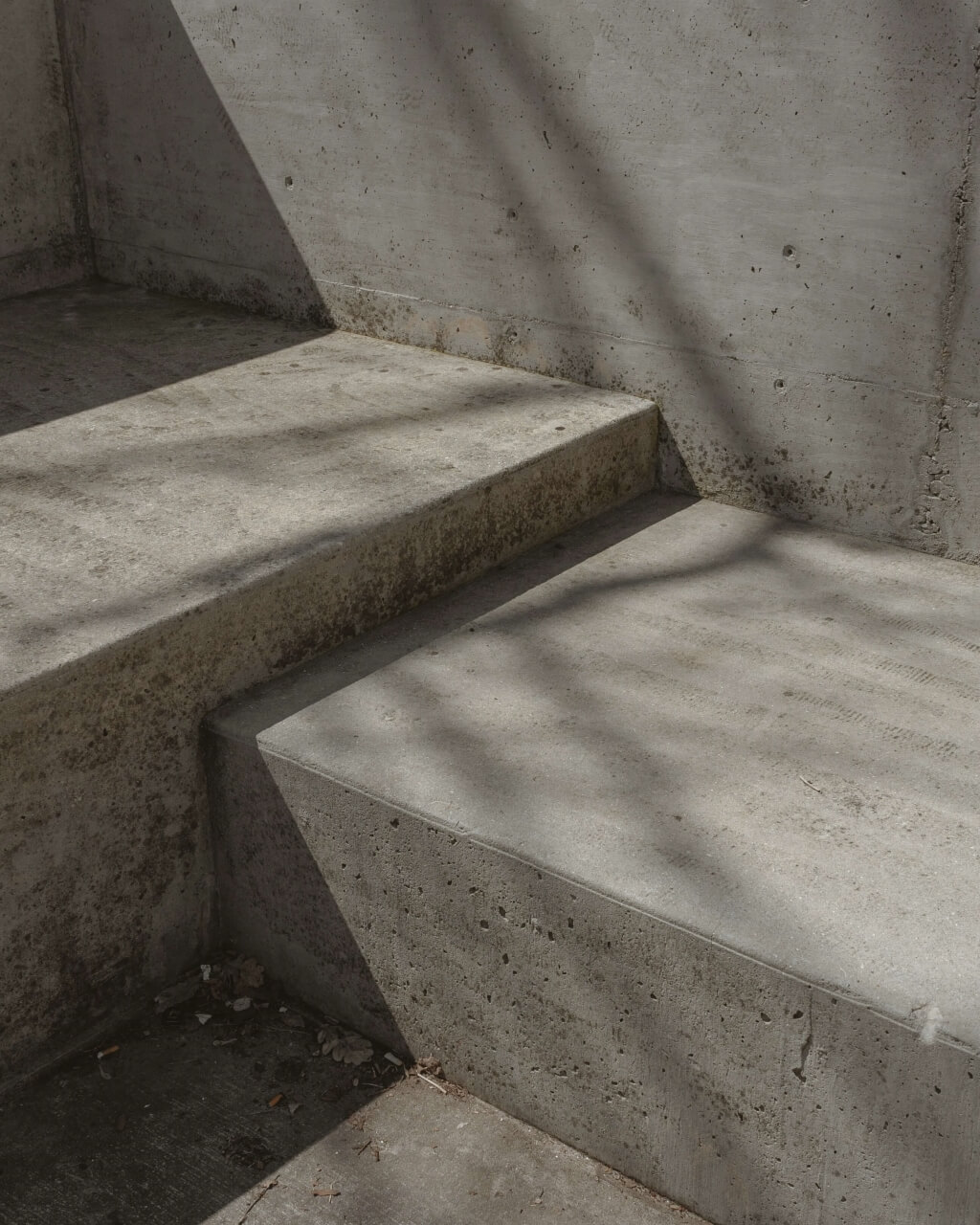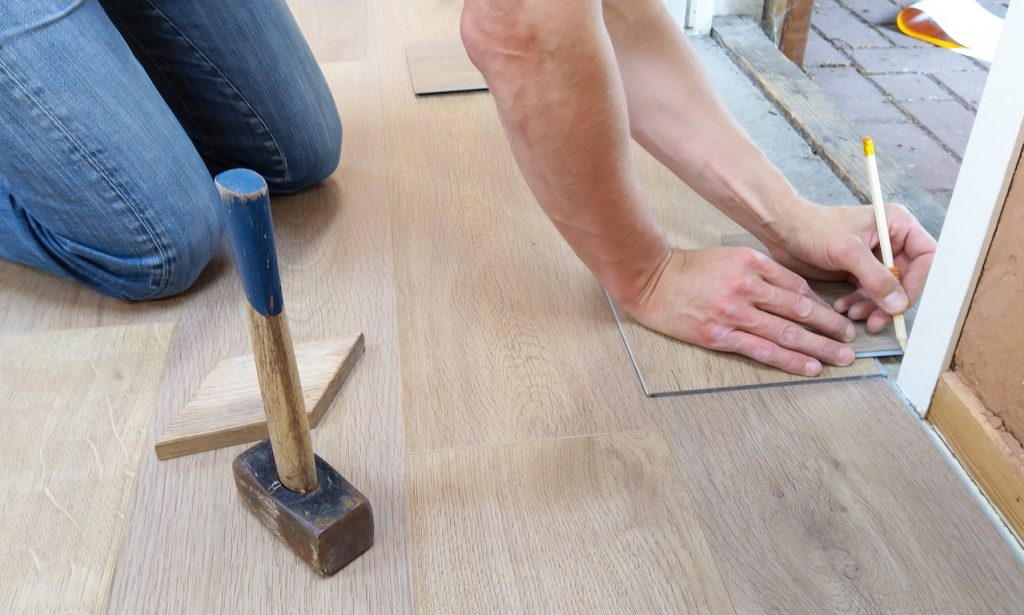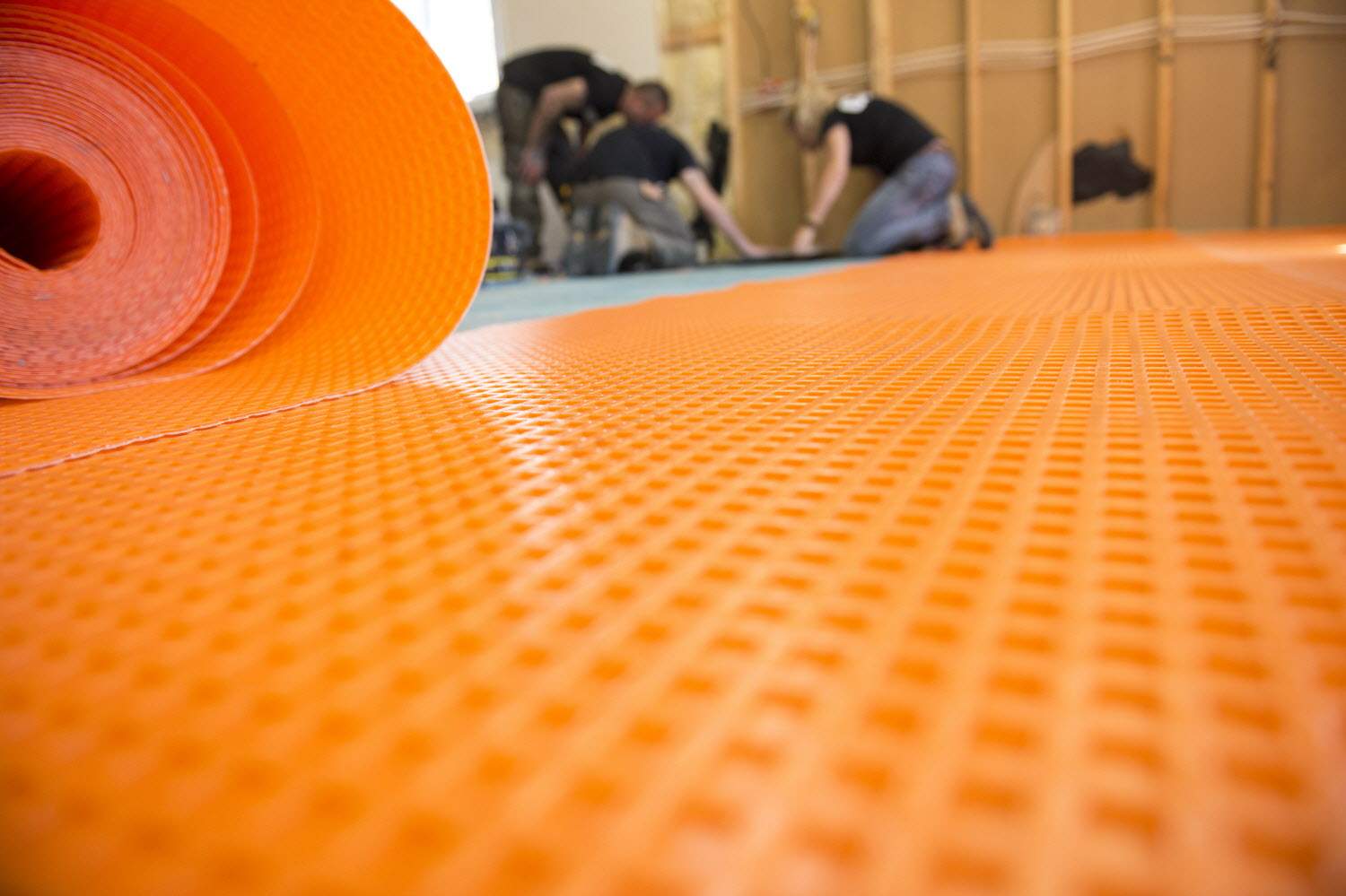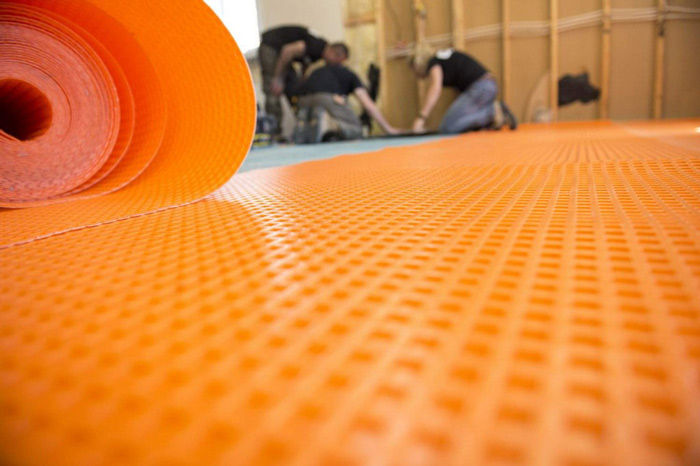You probably know what kind of floors you have in your home – tile, hardwood, linoleum, for example. But do you know what material your subfloor is made of?
Subflooring is the part of a building’s structure that the floor is laid on top of. It is sandwiched between the floor itself and the joists of the building. There are many common subfloor materials, including concrete and plywood.
Floors are obviously important because they give us something to stand on. Naturally, it follows that floors need something to lean on too. This is where subfloors come into play. They provide stability and a sturdy base for the floor.
The quality and material of your subfloor can be critical in determining what type of floor to install and how. Whether you nail, glue, or float your floors doesn’t just boil down to personal choice. Certain subfloors are more or less compatible with different installation techniques. How much weight your floor can carry depends on how well your floor structure has been designed.
Subfloors that are installed improperly – or using the wrong materials – can cause structural failures, excessive movement, sagging, and squeaking. It is important to be knowledgeable about subfloors before making any big decisions about a new floor.
Keep reading to learn about the four most common types of subfloors. In addition, we’ll explore the characteristics that determine their quality and long-term performance implications.
4 Common Subfloor Materials
There are four primary materials used as subfloor:
- plywood & existing hardwoods
- oriented strand board (OSB)
- concrete
- high-performance panels
Although there are other subfloor and underlayment materials out there, they are generally used in more niche situations.
The construction industry is constantly evolving. For example, magnesium oxide (MgO) boards have become a common subfloor type in recent years. They are considered an eco-friendly alternative to concrete, drywall, and other building materials.
What Makes MgO so Eco-Friendly? This type of subfloor doesn’t contain any asbestos, silica, ammonia, formaldehyde, or benzene chemicals. Yay for no toxins! Also, MgO boards are very lightweight and durable.
This helpful guide lists the most common subfloor types. We’ll break them down one by one so you can make informed decisions about your flooring projects.
#1: Plywood & Existing Hardwoods
Plywood is probably the most common subfloor material out there. In fact, until the 1980s, it was just about the only subfloor used in single-family homes.
How is it made? Fabricated sheets of wood veneer are layered and bonded together with special adhesives under heat and pressure.
Because these layers are cross-laminated and layered, plywood subfloor isn’t susceptible to expansion and contraction (like hardwood). Plywood typically comes in interlocking sheets that measure 4 feet by 8 feet and are either 5/8 or ¾ inches thick.
Plywood sheets have a tongue and groove that interlock. Because of this, this material makes an incredibly secure base for just about any flooring, including hardwood, laminates, and bamboo.
If you decide to use plywood, make sure to apply subfloor adhesive to the top of the floor joists. This will prevent the subfloor from moving around and squeaking.
Another option is to use your existing wood floor as a subfloor. Yes, this is sometimes possible! There are some conditions, however:
- make sure that doing so won’t cause height differences between rooms
- ensure the current floor is clean, dry, level, and structurally sound
As long as your hardwood is at least 5/8″ thick, you should be able to nail down to it. You might also be able to glue onto it with a little sanding first (this will depend on the finish).
In either instance, it’s advisable to seek the help of a flooring professional.
#2: Oriented Strand Board (OSB)
The name might initially seem strange, but it all makes sense after you understand how oriented strand board is made. Essentially, OSB is comprised of multiple 3- to 4-inch wood strands that have been layered in a criss-cross pattern.
These strands are then glued and pressed, creating a board that is denser and absorbs less water than plywood. The result is a durable surface with virtually zero defects. Like plywood, installing OSB requires the boards to be glued or nailed to the floor joists.
Generally speaking, ¾-inch thick bamboo (solid) floors are installed right over a ¾-inch thick OSB subfloor. The planks are placed at a 90-degree angle across the floor joists. This pattern stabilizes and strengthens the whole flooring system.
When installing engineered, solid, or floating floors less than ½-inch thick, consider adding a 3/8-inch or ½-inch thick plywood underlayment. When glued or screwed onto your OSB subfloor, this will add stability.
When comparing plywood vs. OSB, many prefer OSB’s smoother surface and long-term sustainability. Plus, the lower manufacturing cost of oriented strand board can help keep home renovation budgets lower.
Did You Know? Installing OSB is similar to installing a plywood subfloor. This means that you won’t need special tools to install it.
#3: Concrete Slab
You may think choosing concrete as a subfloor material will solve all your moisture problems, but concrete is susceptible as well. Concrete slabs are created using water, and they can take months to dry out fully.
These concrete slabs are typically 4 to 6 inches thick and 3,500 – 5,500 pounds per square inch (psi).

Yup, you know exactly what concrete slabs look like… big and gray.
Because of this, you will absolutely need to test your slabs before installing your finished floors. Here’s how:
- Tape plastic sheets down on several areas of your slabs and wait a few days.
- If moisture appears under the plastic, your slabs aren’t dry, and your bamboo floors should NOT be installed.
Pro Tip: To minimize water transfer from natural outdoor water levels, install plastic before pouring your slabs. Once you pour and cure the concrete, lay down a moisture barrier for better protection of your exterior flooring.
While not ideal for laminate or vinyl flooring, concrete provides a durable subfloor for tile or stone flooring.
It is not always advised that traditional hardwood floors be installed over concrete slabs. In general, concrete is a viable subfloor material for hardwood installations on the ground floor or higher.
In contrast, engineered bamboo floors are warranted for installation below-grade.
Bamboo floors are moisture-resistant and can easily be replaced if they become damaged for any reason. Their rigid core makes them more stable than other flooring materials. These are just a few of the traits that set bamboo floors apart for below-grade installations.
Concrete subfloors are primarily suitable for glue-down flooring installations. Floors can also be floated – if the subfloor is properly level. Glue-down methods are more likely to be rendered ineffective by subfloor moisture. As a result, it’s important to test properly before attempting to glue new floors.
#4: High-Performance Panels
High-performance panels are becoming more common. These panels are engineered and offer many of the same plywood and OSB benefits but with some distinct advantages. Most notably, these boards are built specifically to be moisture-resistant.
How are they made? Essentially, high-performance panels are an enhanced OSB product (as a reminder from #2 above, OSB panels are comprised of layered wood strands in a criss-cross pattern that are glued and pressed together). In this type of panel, however, there is a higher density of wood fibers. In addition, special resins are integrated into the panels to:
- resist water absorption
- reduce the swelling that is common with plywood and OSB subflooring
These engineered panels not only minimize swelling due to moisture but also cupping, warping, and delaminating. This eliminates any need for sanding or costly replacements.
Additional advantages of using high-performance panels:
- they are more durable than traditional plywood or OSB underlayment
- the panels are stiffer and stronger
- the panels can hold nails better
- the panels install and remain flat
Panels come in 19/32-inch, 23/32-inch, 7/8-inch, 1-inch, and 1 1/8-inch thickness.
One negative is that high-performance planks tend to cost more than plywood or OSB. But their durability and density arguably make that cost worthwhile.
Moisture Issues
Oftentimes when building a home, the subfloor gets installed before the roof does. This means it will be exposed to the elements and inevitably get wet from snow or rain.
Trust us, your subfloor won’t greet the rain as happily as this woman.
Both OSB and plywood will absorb water. These subfloors will then swell and require either sanding or total replacement before a finished floor can be installed on top.
There are differing opinions on which material stands up better to moisture. Many builders consider OSB to be more structurally sound than plywood. Others say that OSB edges, particularly edges that have been cut, will swell when exposed to significant amounts of water.
When plywood takes on moisture, it tends to:
- expand evenly throughout the panel
- dry quicker
- shrink back to its original size quicker than OSB
3 Reasons You Might Not Need Flooring Underlayment
The underlayment is a layer that goes between the subfloor and the exterior flooring. It serves as a moisture barrier and provides additional support for the flooring.
If you don’t know how to choose an underlayment, this video can help:
The same materials used for a subfloor are also used as underlayment. This means a high-quality subfloor won’t require an underlayment. Here are a few specific situations in which adding the underlayment isn’t necessary.
#1: You’re Laying Laminate Flooring
Most laminate flooring has an underlayment material attached to the bottom of the flooring. Since the underlayment is pre-attached to the exterior flooring, laminate manufacturers advise against setting down an additional underlayment. Doing so may lead to loose or unstable flooring.
#2: Your Home Is New Construction

If your home was built within the last decade, the homebuilders probably installed a solid subfloor during the construction. As previously mentioned, a good-quality subfloor makes installing an underlayment redundant. In fact, a durable subfloor is the best underlayment for hardwood floors and other types of flooring.
#3: You Plan to Install a New Subfloor
Finally, you can avoid installing an underlayment if you already intend to rebuild the subfloor. Since the same materials are used in each layer, you can devote your resources to installing a high-quality OSB, plywood, or high-performance panel subfloor instead.
Subfloor Installation Management Tips
Let’s assume that you’re planning to install your bamboo floors over either plywood or OSB. After all, these are the two most common and affordable subflooring materials.
- Set your moisture meter accordingly.
- Measure by taking at least 20 readings per 1,000 square feet.
- Compare that level to your new bamboo planks.
- Follow the manufacturer’s guidelines for an acceptable percentage difference between the two.
If you find areas of your subfloor where moisture is a concern, consider installing a vapor retarder over your subfloor. This will minimize any moisture transfer and the impact of seasonal humidity fluctuations.
Once your moisture levels aren’t an issue, you’ll want to check to make sure the subfloor is stable. In addition, confirm your fasteners aren’t over or under-driven, and fill or sand any uneven joints.
Once your subfloors are properly installed, dry, and stable, you can start laying your new beautiful bamboo planks.
If you have to questions, please contact us!
Last Updated: 6/2/2023

About the Author
James is your friendly neighborhood content writer here at the Green Living Blog. With a passion for all things sustainable, he’s your go-to guru for everything eco-friendly. Armed with a treasure trove of wisdom about sustainable living, recycling, and environmentally conscious practices, James is on a mission. He’s here to make sure you not only protect your family but also keep Mother Earth smiling. 😊🌎 When he’s not busy sharing eco-friendly insights, James can often be found teaching his cat that compost bins make the purr-fect hideaway. 🐱♻️ Join James on his quest to uncover the secrets of defeating wasteful habits while leaving the lightest footprint on our precious planet’s ecosystem.


